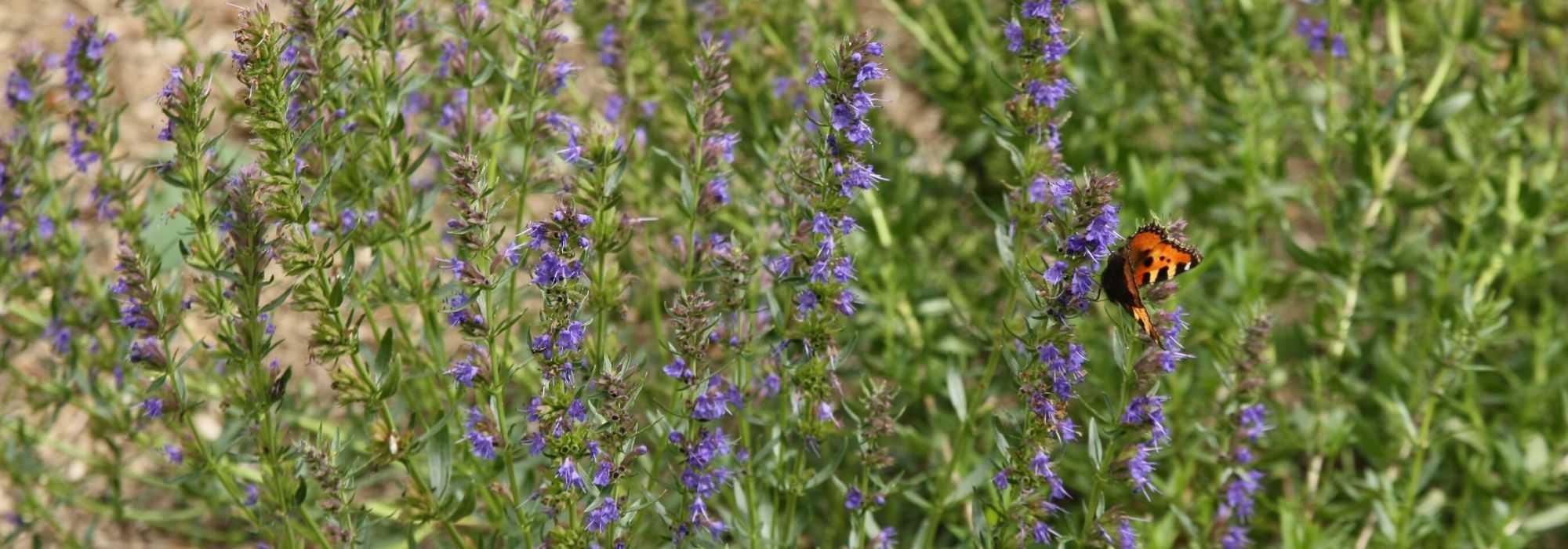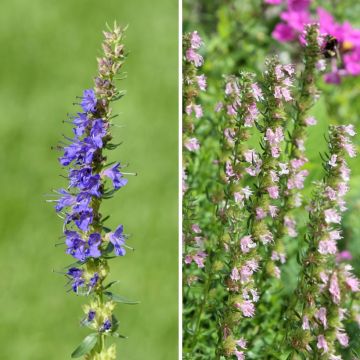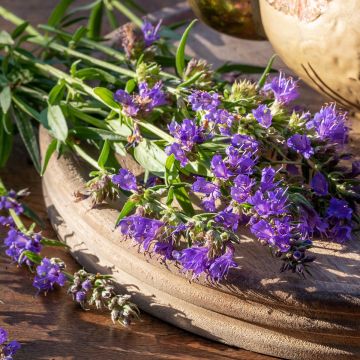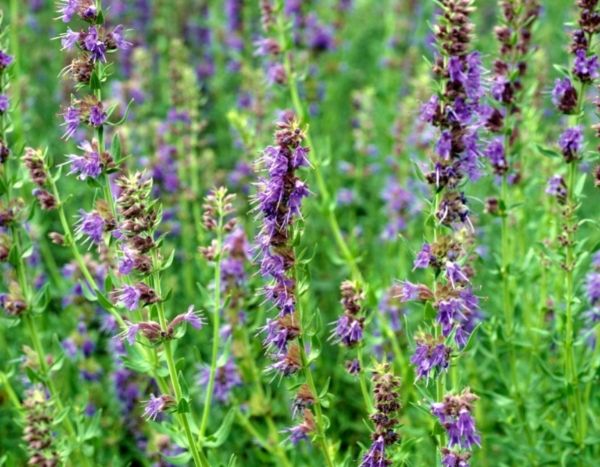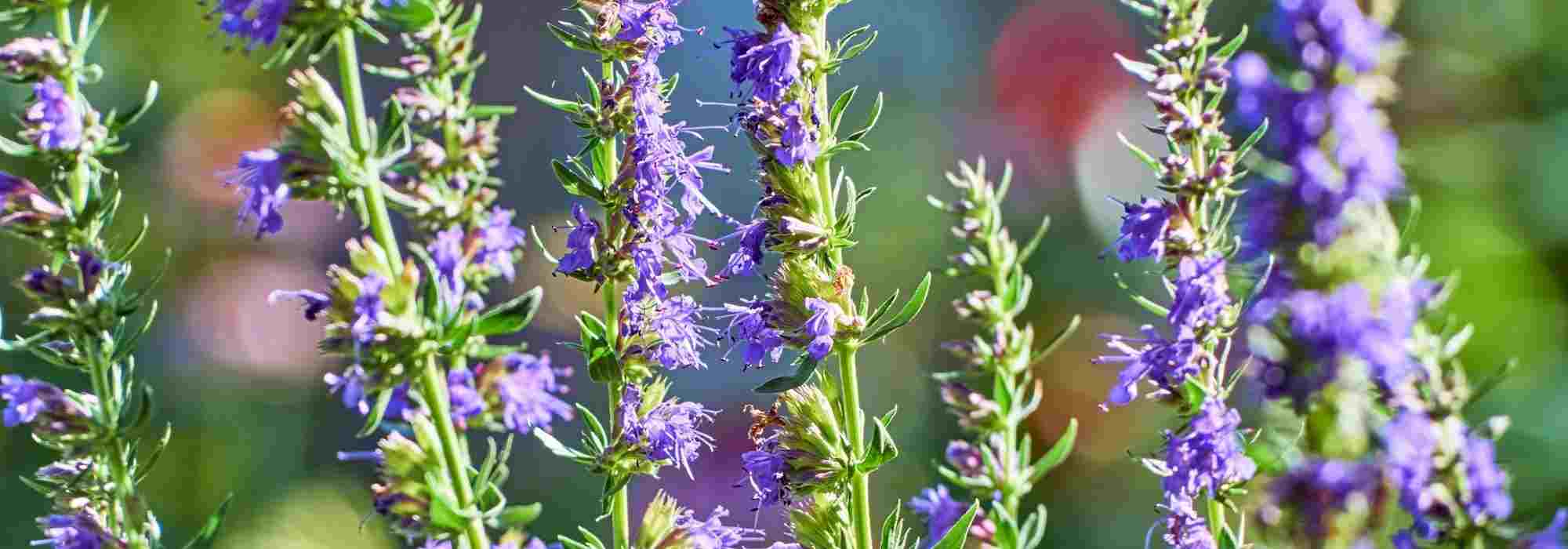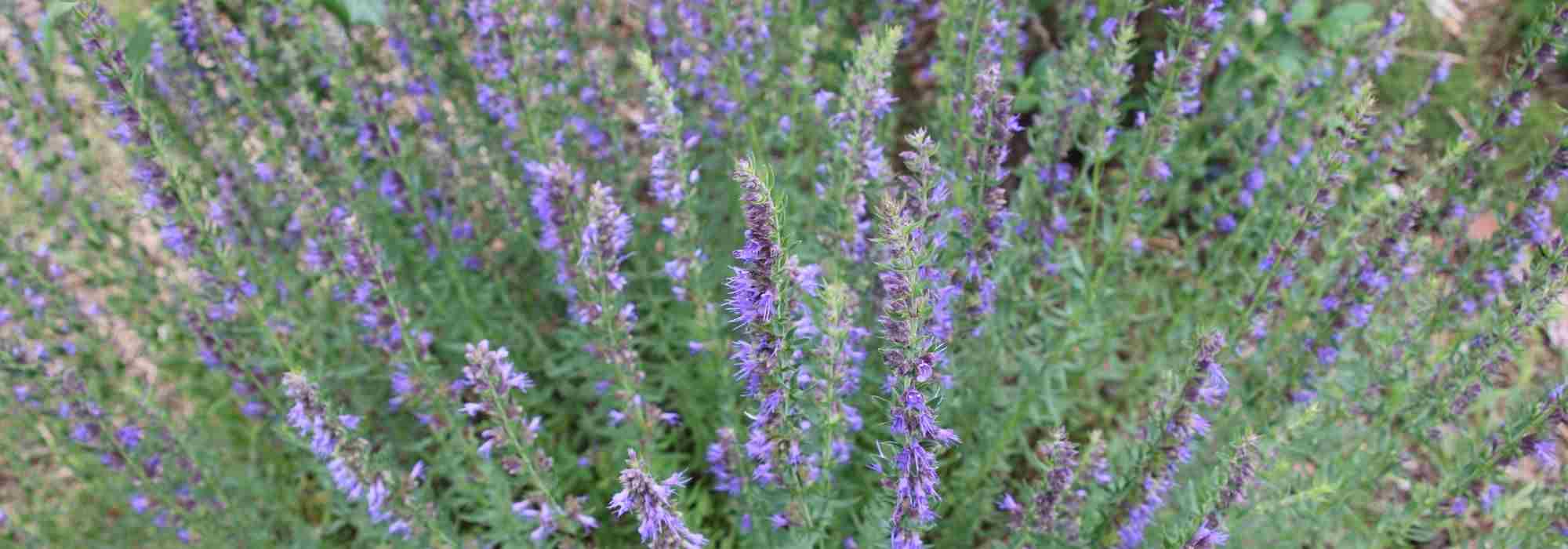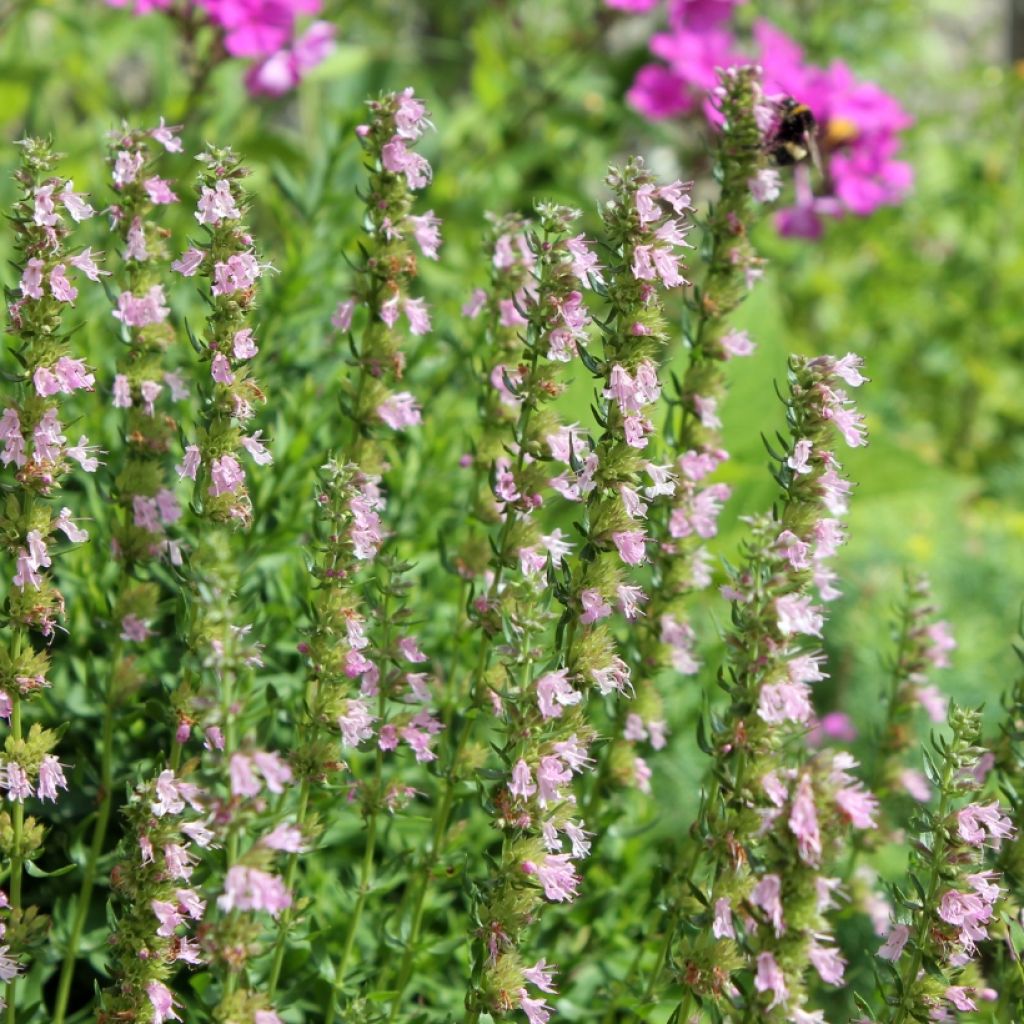

Hyssopus officinalis Roseus
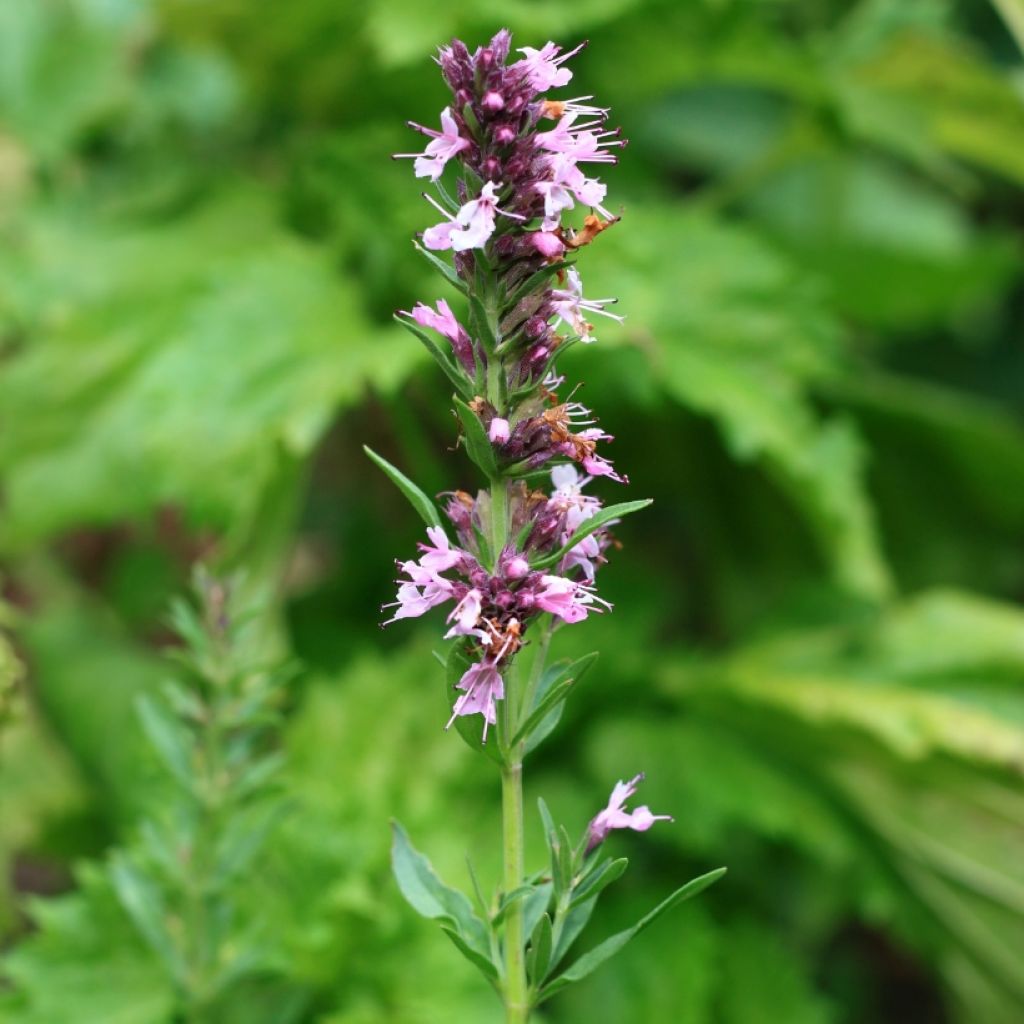

Hyssopus officinalis Roseus
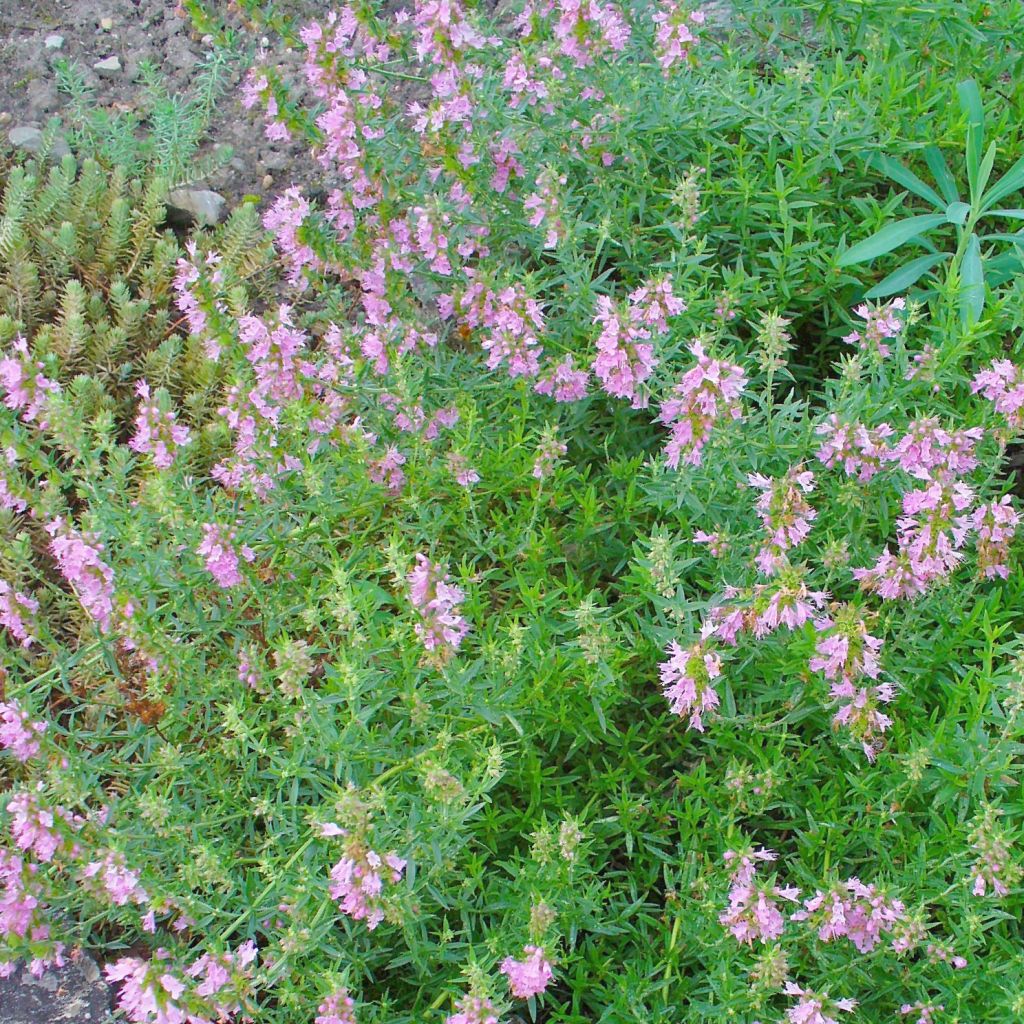

Hyssopus officinalis Roseus
Hyssopus officinalis Roseus
Hyssopus officinalis f. roseus
Pink hyssop
satisfied but the heatwave is preventing me from saying more.
alain, 12/07/2025
Special offer!
Receive a €20 voucher for any order over €90 (excluding delivery costs, credit notes, and plastic-free options)!
1- Add your favorite plants to your cart.
2- Once you have reached €90, confirm your order (you can even choose the delivery date!).
3- As soon as your order is shipped, you will receive an email containing your voucher code, valid for 3 months (90 days).
Your voucher is unique and can only be used once, for any order with a minimum value of €20, excluding delivery costs.
Can be combined with other current offers, non-divisible and non-refundable.
Home or relay delivery (depending on size and destination)
Schedule delivery date,
and select date in basket
This plant carries a 24 months recovery warranty
More information
We guarantee the quality of our plants for a full growing cycle, and will replace at our expense any plant that fails to recover under normal climatic and planting conditions.

Does this plant fit my garden?
Set up your Plantfit profile →
Description
Hyssopus officinalis 'Roseus', also known as pink hyssop, is a woody undershrub, bearing small semi-evergreen narrow and aromatic leaves on its upright branches. In summer, it produces long spikes densely covered with small pink tubular flowers. Melliferous and nectariferous, this plant has its place in the ornamental garden where it is particularly generous in the sun, in well-drained soil. Ideal in a rockery. Very hardy.
Hyssopus officinalis 'Roseus' belongs to the Lamiaceae family, just like sage, thyme, mint, and oregano, which all share numerous medicinal properties. It is the pink form of Hyssopus officinalis, originating from the Mediterranean rim, the Near-East, and the Caucasus, where it grows on arid hillsides. It is a small shrub with thin and upright branches, forming a small well-balanced bush, reaching 45cm (18in) in all directions. Its growth rate depends on the richness of the soil. The branches bear small semi-evergreen, bright green, narrow, aromatic leaves. Flowering takes place from June to September. The light pink flowers are layered in long clusters at the end of the branches. They are tubular and show protruding stamens. This flowering attracts many insects and butterflies.
Hyssop used to find its place in the gardens of priests and it was highly prized in medieval gardens. This medicinal plant, whose leaves are used to accompany meats and fish, fully has its place in the ornamental garden. Plant it in a large rockery alongside helianthemum, small broom, oregano, thyme, and officinal sage. Under the least humid climates, plant it on dry embankments alongside cistus, lavender and rosemary. This plant tolerates pruning well. It is possible to shape it into a ball, and it can even be used to replace boxwood along a vegetable garden path or to delimit squares of condiment plants. It adapts well to cultivation in large pots, taking care to let the substrate dry between two waterings.
Hyssop is a condiment and medicinal plant. It is used both in cooking and in phytotherapy and it is used in the manufacture of many beverages such as beer, Grande-Chartreuse, Benedictine, Pastis, and lemon balm water. Its essential oil is neurotoxic and abortive. For this reason, its marketing is regulated.
Hyssopus officinalis Roseus in pictures
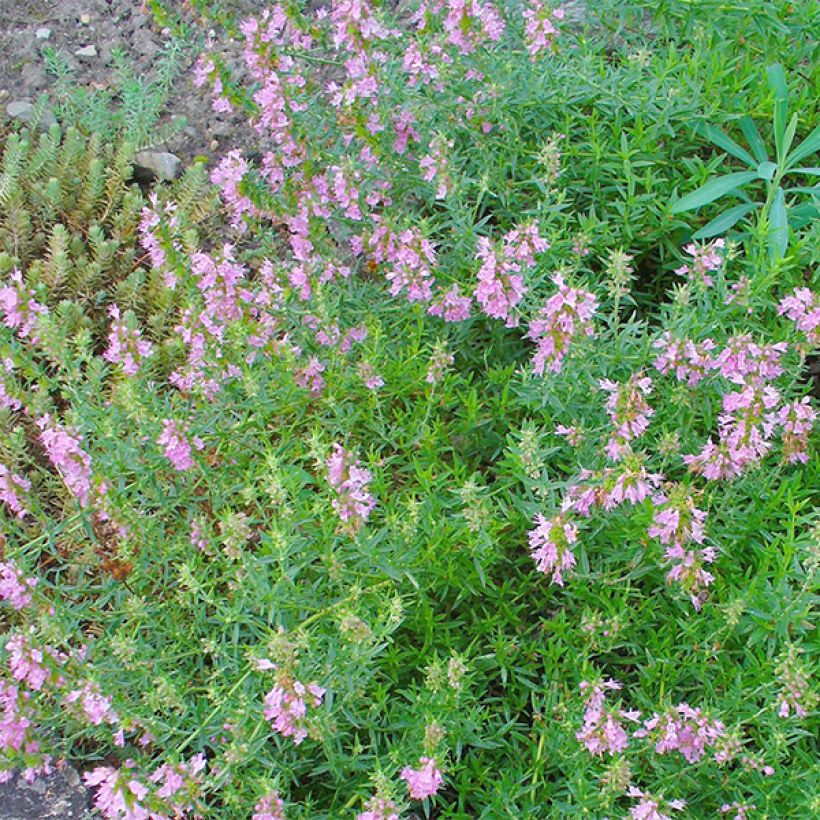

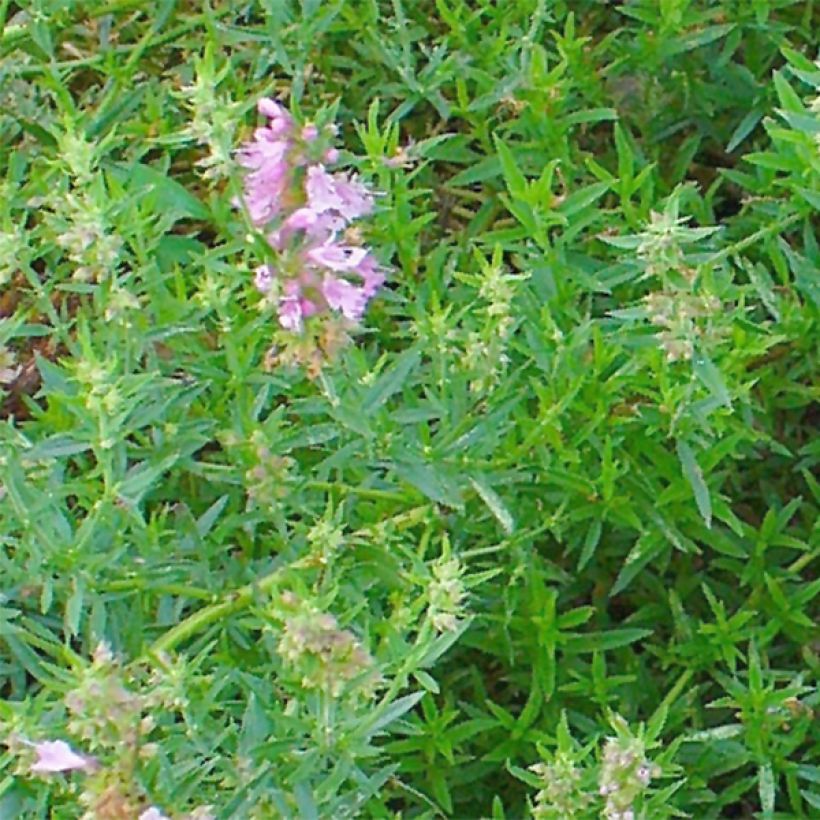

Plant habit
Flowering
Foliage
Botanical data
Hyssopus
officinalis
f. roseus
Lamiaceae
Pink hyssop
Cultivar or hybrid
Other Hyssopus
View all →Planting and care
It is very easy to grow in any well-drained soil as it fears heavy, compact and damp soils. It can adapt to dry and poor mediums, but is more beautiful in light, fertile soil. Limestone is not a problem. It requires a warm and very sunny exposure. It does not tolerate winter humidity, which can greatly harm its hardiness. In a cool and humid climate, add gravel or coarse sand to the planting soil, and plant it in a large hole.
Planting period
Intended location
Care
Planting & care advice
-
, onOrder confirmed
Reply from on Promesse de fleurs
Haven't found what you were looking for?
Hardiness is the lowest winter temperature a plant can endure without suffering serious damage or even dying. However, hardiness is affected by location (a sheltered area, such as a patio), protection (winter cover) and soil type (hardiness is improved by well-drained soil).

Photo Sharing Terms & Conditions
In order to encourage gardeners to interact and share their experiences, Promesse de fleurs offers various media enabling content to be uploaded onto its Site - in particular via the ‘Photo sharing’ module.
The User agrees to refrain from:
- Posting any content that is illegal, prejudicial, insulting, racist, inciteful to hatred, revisionist, contrary to public decency, that infringes on privacy or on the privacy rights of third parties, in particular the publicity rights of persons and goods, intellectual property rights, or the right to privacy.
- Submitting content on behalf of a third party;
- Impersonate the identity of a third party and/or publish any personal information about a third party;
In general, the User undertakes to refrain from any unethical behaviour.
All Content (in particular text, comments, files, images, photos, videos, creative works, etc.), which may be subject to property or intellectual property rights, image or other private rights, shall remain the property of the User, subject to the limited rights granted by the terms of the licence granted by Promesse de fleurs as stated below. Users are at liberty to publish or not to publish such Content on the Site, notably via the ‘Photo Sharing’ facility, and accept that this Content shall be made public and freely accessible, notably on the Internet.
Users further acknowledge, undertake to have ,and guarantee that they hold all necessary rights and permissions to publish such material on the Site, in particular with regard to the legislation in force pertaining to any privacy, property, intellectual property, image, or contractual rights, or rights of any other nature. By publishing such Content on the Site, Users acknowledge accepting full liability as publishers of the Content within the meaning of the law, and grant Promesse de fleurs, free of charge, an inclusive, worldwide licence for the said Content for the entire duration of its publication, including all reproduction, representation, up/downloading, displaying, performing, transmission, and storage rights.
Users also grant permission for their name to be linked to the Content and accept that this link may not always be made available.
By engaging in posting material, Users consent to their Content becoming automatically accessible on the Internet, in particular on other sites and/or blogs and/or web pages of the Promesse de fleurs site, including in particular social pages and the Promesse de fleurs catalogue.
Users may secure the removal of entrusted content free of charge by issuing a simple request via our contact form.
The flowering period indicated on our website applies to countries and regions located in USDA zone 8 (France, the United Kingdom, Ireland, the Netherlands, etc.)
It will vary according to where you live:
- In zones 9 to 10 (Italy, Spain, Greece, etc.), flowering will occur about 2 to 4 weeks earlier.
- In zones 6 to 7 (Germany, Poland, Slovenia, and lower mountainous regions), flowering will be delayed by 2 to 3 weeks.
- In zone 5 (Central Europe, Scandinavia), blooming will be delayed by 3 to 5 weeks.
In temperate climates, pruning of spring-flowering shrubs (forsythia, spireas, etc.) should be done just after flowering.
Pruning of summer-flowering shrubs (Indian Lilac, Perovskia, etc.) can be done in winter or spring.
In cold regions as well as with frost-sensitive plants, avoid pruning too early when severe frosts may still occur.
The planting period indicated on our website applies to countries and regions located in USDA zone 8 (France, United Kingdom, Ireland, Netherlands).
It will vary according to where you live:
- In Mediterranean zones (Marseille, Madrid, Milan, etc.), autumn and winter are the best planting periods.
- In continental zones (Strasbourg, Munich, Vienna, etc.), delay planting by 2 to 3 weeks in spring and bring it forward by 2 to 4 weeks in autumn.
- In mountainous regions (the Alps, Pyrenees, Carpathians, etc.), it is best to plant in late spring (May-June) or late summer (August-September).
The harvesting period indicated on our website applies to countries and regions in USDA zone 8 (France, England, Ireland, the Netherlands).
In colder areas (Scandinavia, Poland, Austria...) fruit and vegetable harvests are likely to be delayed by 3-4 weeks.
In warmer areas (Italy, Spain, Greece, etc.), harvesting will probably take place earlier, depending on weather conditions.
The sowing periods indicated on our website apply to countries and regions within USDA Zone 8 (France, UK, Ireland, Netherlands).
In colder areas (Scandinavia, Poland, Austria...), delay any outdoor sowing by 3-4 weeks, or sow under glass.
In warmer climes (Italy, Spain, Greece, etc.), bring outdoor sowing forward by a few weeks.






























